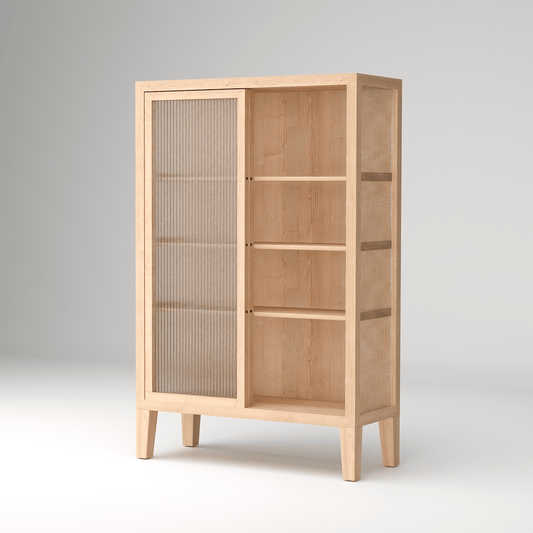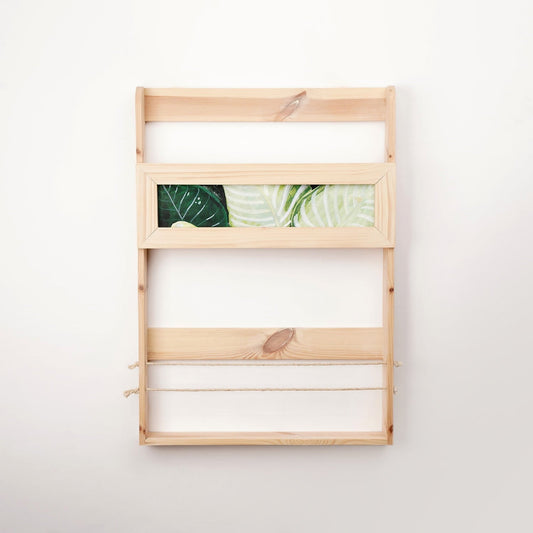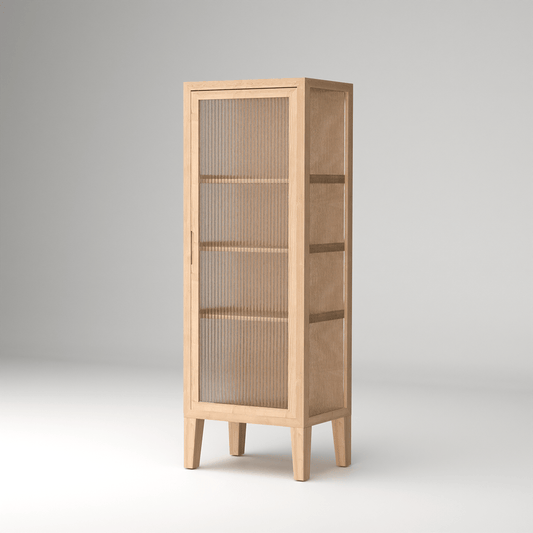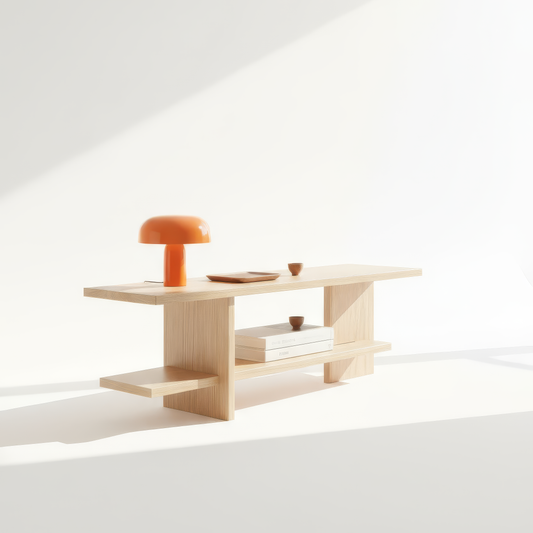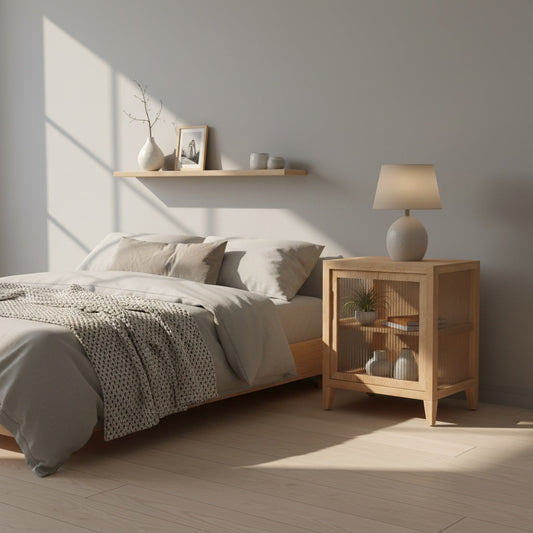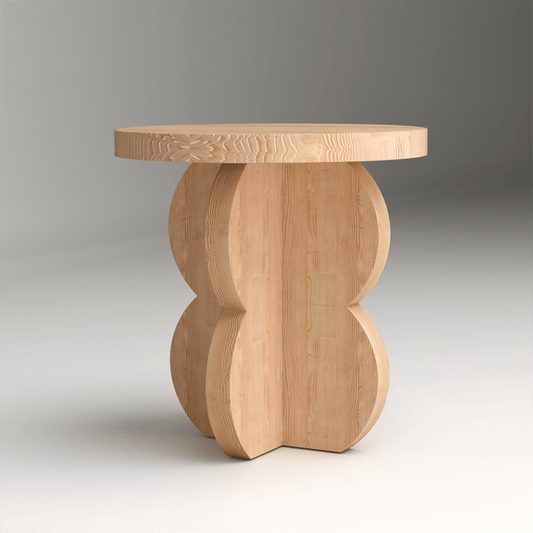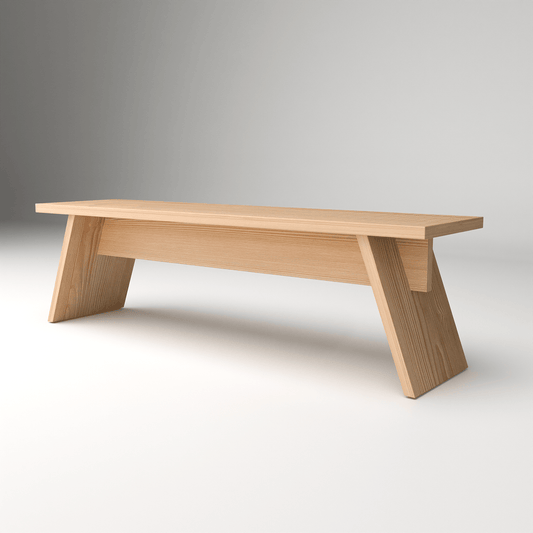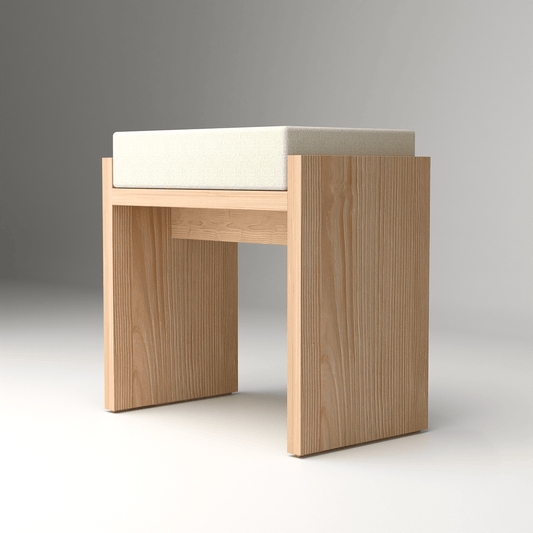The heart of Japandi design lies in its deep reverence for natural materials. This design philosophy celebrates the inherent beauty of wood, stone, and other organic elements, viewing them not merely as building materials but as connections to the natural world that ground us and bring authenticity to our living spaces. Understanding how to select, use, and care for these materials is essential to creating truly harmonious Japandi interiors.
The Philosophy of Natural Materials
Connection to Nature
Natural materials serve as bridges between our indoor environments and the natural world outside. In Japandi design, these materials are chosen not just for their aesthetic appeal, but for their ability to create spaces that feel alive, breathing, and connected to the earth's rhythms.
Authenticity and Honesty
Material Truth: Allowing materials to express their natural characteristics Aging Gracefully: Embracing how natural materials change and develop patina over time Imperfection Beauty: Celebrating the unique variations that make each piece special Sustainable Choice: Selecting materials that support environmental responsibility
Wood: The Foundation of Japandi Design
Types of Wood for Japandi Interiors
Pine Wood: Light, versatile timber with beautiful grain patterns and natural warmth Oak: Durable hardwood with distinctive grain that adds character and strength Maple: Smooth, light-colored wood that creates clean, minimalist aesthetics Bamboo: Fast-growing, sustainable option that embodies both traditions
Wood Applications in Home Design
Structural Elements: Beams, posts, and architectural features that define spaces Furniture Construction:Tables, chairs, and storage pieces that anchor rooms Flooring Solutions: Natural wood floors that create warmth and continuity Wall Treatments: Wood paneling and accents that add texture and interest
The Solid Pine Wood Nightstand - SOMA at ₹34,500 exemplifies the beauty of natural pine wood in Japandi design, showcasing the material's inherent grain patterns and warm color while providing functional bedside storage that feels both purposeful and serene.
Wood Finishing Philosophy
Natural Finishes: Oils and waxes that enhance rather than hide wood grain Minimal Processing:Treatments that preserve the wood's natural character Breathable Coatings: Finishes that allow wood to expand and contract naturally Maintenance-Friendly: Treatments that can be renewed and refreshed over time
Stone Elements in Japandi Spaces
Types of Stone for Interior Use
Natural Stone Slabs: Granite, marble, and slate that bring earth energy indoors River Rocks: Smooth stones that add organic shapes and textures Ceramic Tiles: Clay-based materials that connect to earth elements Concrete Elements: Modern stone-like materials that bridge traditional and contemporary
Stone Applications
Kitchen Surfaces: Countertops that provide durable, beautiful work areas Bathroom Features: Shower surrounds and vanity tops that create spa-like atmospheres Accent Walls: Stone features that add texture and visual interest Decorative Elements: Sculptures and objects that bring natural beauty indoors
Stone Care and Maintenance
Sealing Requirements: Protecting porous stones from stains and damage Gentle Cleaning: Methods that preserve stone's natural beauty Natural Aging: Allowing stones to develop character over time Professional Restoration: When to seek expert care for valuable stone elements
Organic Textiles and Fibers
Natural Fiber Selection
Linen: Breathable, durable fabric that ages beautifully and feels authentic Cotton: Versatile, comfortable material available in various weights and weaves Wool: Natural insulation that adds warmth and texture to spaces Hemp: Sustainable, strong fiber that becomes softer with use
Textile Applications in Japandi Design
Window Treatments: Natural fabrics that filter light while maintaining privacy Upholstery Choices:Furniture coverings that feel authentic and comfortable Bedding Materials: Sleep textiles that breathe and regulate temperature Decorative Accents: Pillows, throws, and rugs that add softness and warmth
The Minimalist Wooden Hand Towel Rail at ₹4,490 demonstrates how natural wood can support organic textiles, providing a beautiful display for linen towels while maintaining the clean aesthetic essential to Japandi design.
Plant Materials and Living Elements
Indoor Plant Selection
Architectural Plants: Species with interesting forms that complement clean lines Air-Purifying Varieties:Plants that improve indoor environmental quality Low-Maintenance Options: Species that thrive with minimal intervention Seasonal Interest: Plants that change subtly throughout the year
Natural Container Choices
Ceramic Planters: Earth-based containers that feel connected to nature Wooden Boxes: Planters that integrate with furniture materials Stone Vessels: Heavy, grounding containers that anchor plant displays Woven Baskets: Natural fiber containers that add texture and warmth
Integration Strategies
Architectural Placement: Positioning plants to enhance rather than clutter spaces Grouping Principles:Arranging plants for maximum visual and environmental impact Seasonal Rotation: Changing displays to reflect natural cycles Care Integration: Making plant maintenance part of daily mindfulness practice
Metal Elements in Natural Harmony
Appropriate Metal Choices
Brass Accents: Warm metal that complements wood tones Copper Elements: Living metal that develops beautiful patina over time Iron Details: Strong, honest metal for structural and decorative elements Stainless Steel: Clean, modern metal for functional applications
Metal Applications
Hardware Selection: Hinges, handles, and fixtures that support rather than dominate Lighting Fixtures:Metal elements that provide function while maintaining aesthetics Structural Support: Honest use of metal for necessary structural elements Decorative Accents: Carefully chosen metal objects that add interest without overwhelm
Color Palettes from Natural Materials
Wood-Inspired Colors
Warm Neutrals: Creams, beiges, and soft browns that echo timber tones Natural Whites: Off-whites that complement rather than compete with wood Soft Grays: Cool neutrals that balance warm wood elements Earth Tones: Colors drawn from soil, bark, and natural wood variations
Stone-Inspired Hues
Cool Grays: Colors that echo granite and slate Warm Beiges: Hues that reflect sandstone and limestone Deep Browns: Rich colors that mirror earth and clay Subtle Greens: Soft colors that suggest moss and lichen
Sourcing Natural Materials Responsibly
Sustainable Wood Selection
Certified Sources: Timber from responsibly managed forests Reclaimed Materials: Salvaged wood that reduces environmental impact Local Sourcing: Materials from nearby sources that reduce transportation Fast-Growing Species: Woods like bamboo that regenerate quickly
Ethical Stone Sourcing
Local Quarries: Stone sources that support regional economies Minimal Processing: Materials that require less energy to prepare Waste Reduction: Using stone remnants and off-cuts creatively Transportation Consideration: Choosing materials that don't require long-distance shipping
Working with Natural Material Variations
Embracing Imperfections
Grain Variations: Celebrating the unique patterns in each piece of wood Color Differences: Working with natural color variations rather than fighting them Texture Changes: Appreciating how materials feel different in various applications Aging Characteristics: Planning for how materials will change over time
Design Flexibility
Adaptive Planning: Designing around material characteristics rather than forcing conformity Creative Problem-Solving: Using material limitations as design opportunities Seasonal Considerations: Planning for how materials respond to environmental changes Long-Term Thinking: Choosing materials that improve with age and use
Maintenance and Care Philosophy
Gentle Care Practices
Natural Cleaning Products: Solutions that don't damage or compromise materials Regular Maintenance:Consistent care that prevents major problems Seasonal Attention: Adjusting care routines based on environmental conditions Professional Guidance: Knowing when to seek expert advice for valuable materials
Preservation Strategies
Preventive Measures: Protecting materials from damage before it occurs Restoration Techniques:Learning to refresh and renew natural materials Replacement Planning: Understanding when materials need to be replaced Documentation: Keeping records of material sources and care procedures
Budget Approaches to Natural Materials
Investment Priorities
High-Impact Areas: Focusing natural materials where they'll have greatest effect Quality Over Quantity:Choosing fewer, better materials rather than numerous cheaper options Long-Term Value: Investing in materials that will last and improve with age Professional Installation: When to hire experts for proper material installation
Cost-Effective Strategies
Reclaimed Material Sources: Finding beautiful materials at reduced costs DIY Installation: Learning to work with materials yourself when appropriate Gradual Implementation: Building natural material palettes over time Local Sourcing: Reducing costs by choosing nearby material sources
Cultural Sensitivity and Authenticity
Respectful Use
Understanding Origins: Learning about the cultural significance of material choices Appropriate Application: Using materials in ways that honor their traditions Supporting Artisans: Choosing materials from makers who understand their cultural context Personal Interpretation: Adapting traditional uses to contemporary needs
Modern Integration
Contemporary Needs: Applying traditional materials to modern living requirements Technology Balance:Integrating necessary modern elements with natural materials Cultural Fusion: Respectfully combining materials from different traditions Evolution and Growth: Allowing material choices to develop over time
Creating Harmony with Natural Materials
Natural materials form the foundation of authentic Japandi design, creating spaces that feel connected to the earth and supportive of human well-being. By choosing materials that age beautifully, celebrating their inherent characteristics, and caring for them with respect and intention, you create environments that become more beautiful and meaningful over time.
The key to success with natural materials lies in understanding that they are living elements that change and evolve. Rather than fighting these changes, Japandi design embraces them as part of the beauty and authenticity that make natural materials so compelling. Whether you start with a single natural element or gradually transform your entire home, these materials offer a pathway to creating spaces that truly support both aesthetic beauty and personal well-being.


